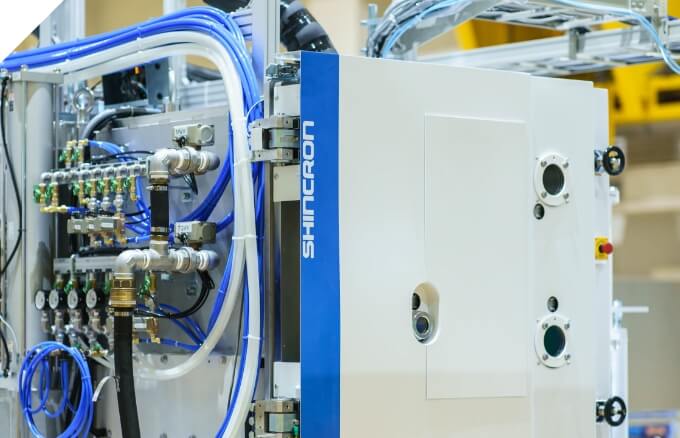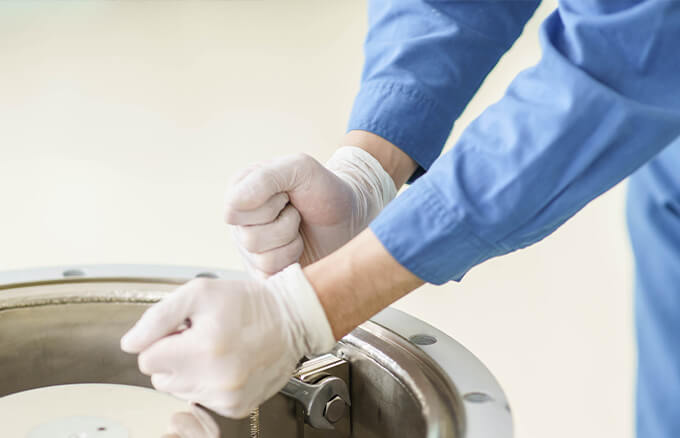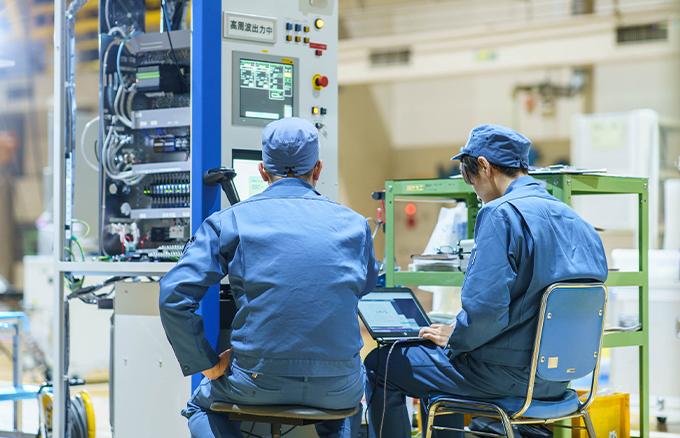11. Maintenance of thin film deposition systems
11.1 What is maintenance?
Maintenance is performed to “maintain system reliability”.
In other words, it is intended to maintain the expected system performance and expected treatment for a long time.
Maintenance can be classified into the following categories:
- Preventive maintenance: Maintenance performed in a planned manner to prevent failures
- Reactive maintenance: Repair performed after the occurrence of a failure
- Corrective maintenance: Maintenance performed for the enhancement of performance, such as increasing operation efficiency
11.2 Actual system maintenance
Performing maintenance after the occurrence of a failure is one method.
However, in such a case, it takes time and cost for restoration and the production plan is affected, because a repair needs to be performed by the system manufacturer’s service personnel.
Users of film forming systems need to perform sufficient preventive maintenance. In the “Maintenance” section of system operation manuals, the maintenance and inspection procedures as preventive maintenance, how to cope with abnormalities, and precautions are described in detail. In addition, the periodical inspection items and maintenance cycle are shown in a table. Therefore, preventive maintenance needs to be performed according to these procedures. As the maintenance cycle shown in this table is established based on general use conditions, consideration needs to be given to increasing the frequency of maintenance if a system is operated both night and day. Major parts to be inspected are as follows:
- Inspection before work: Inspection of basic utilities such as electricity, cooling water, and compressed air, as well as the oil level of oil-sealed rotary pumps
- Cleaning of vacuum chamber: Dirt could be a cause of a reduction in production volume and film quality, due to extended gas exhaustion time
- Inspection of fastening components: Check if they are fastened properly
- Electrode terminals: An increase in contact resistance could be a cause of heat generation
- Packings: Could be a cause of vacuum leakage
- Compressed air systems: A malfunction of pneumatically actuated components such as valves could be the cause of a serious problem
- Inspection of mechanisms: Check if they operate smoothly
- Inspection of measuring instruments and power supply devices: Check if they display normal values and do not show any error
- Others: Check for any dirt and dust in the chassis or power supply
When performing maintenance, it may be convenient to prepare a list of daily inspection items according to the operation manual and use this list as a check sheet.
11.3 The points for maintenance
Note the following when performing preventive maintenance:
- Understand the normal conditions (such as operating conditions, setting values, indications of instruments) accurately
- Record the time for replacement of parts whose lifetime is limited
- Identify the names of components and functions correctly
- Understand the functions of systems and components
- Understand the input/output signals and their applications
- Read through the operation manual
11.4 The matters to be checked in the event of a problem
In the event of a problem in spite of sufficient preventive maintenance, contact us after checking the following so that we can deal with it in a short time:
- Date of occurrence
- Symptoms
- What kind of operation was performed when the problem occurred?
- In what section of the system did the problem occur, and what are the symptoms?
- Are there any error messages?
- Is there any change made before the symptoms are observed?
- Problem
- Is this problem chronic, or did it only occur sometimes?
- Is there any broken section in the system?
- Does this problem recur if the same operation is performed?
- Are there any other problems that seem not to be directly related to this problem?
- Are there any changes that have been made to the plant facilities other than the relevant system?




